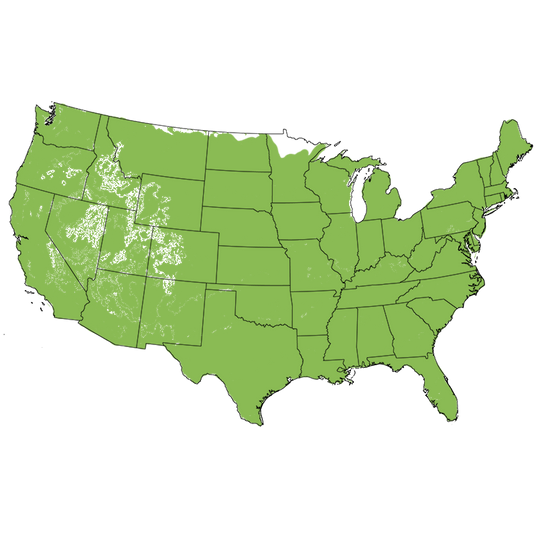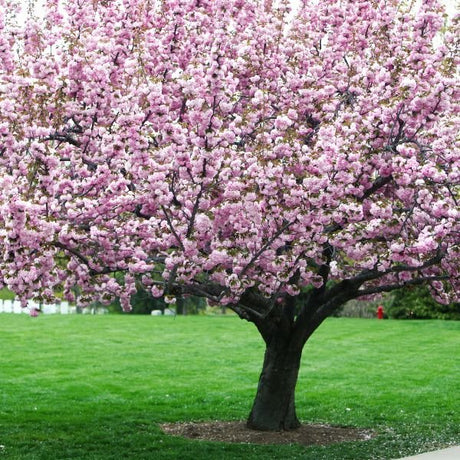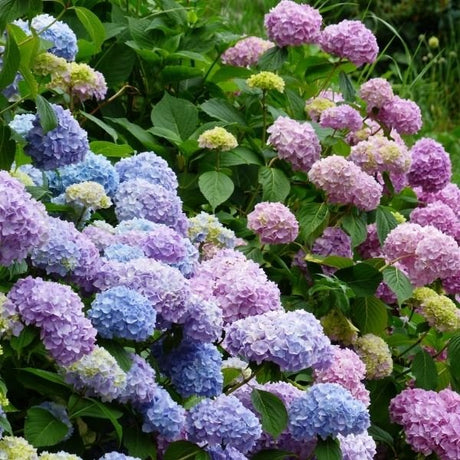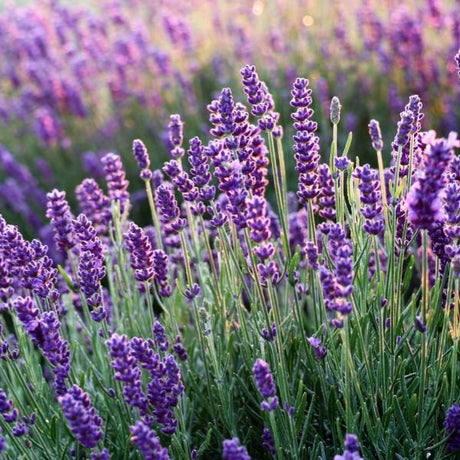Fuji Apple Tree
- Stay Protected with Plant Sentry ™
Fuji Apple Tree - 4-5 Feet Bareroot is backordered and will ship as soon as it is back in stock.
Plant Sentry™
Plant Sentry™
Plant Sentry is designed to protect both consumers and the nursery trade from invasive plant pests and diseases. Sites that display the Plant Sentry protection badge are protected from consumers buying and nurseries shipping material carrying invasive pests and diseases.
This proprietary eCommerce software prevents the shipment of a restricted plant to each state. The Plant Sentry system includes a shipment certification program. The Plant Sentry Compliance Officer works closely with NatureHills.com and each nursery or fulfillment center to ensure only compliant plants are sold to customers.
Click Here to learn more

Delivery and Shipping
Delivery and Shipping
Shipping
To obtain a more accurate shipment time-frame, simply enter your zip code in the “Find Your Growing Zone” box to the right. Our plants are grown all over the country and lead time on items may be different because of this. Once your order is placed, you will also receive the specific shipment time-frame information as part of your order confirmation. Once an item ships, you will receive shipment notification and tracking numbers, so you can follow along while your plant travels to your doorstep. We use FedEx, UPS, or USPS at our discretion.
Due to winter weather we have put a hold on shipping to the areas shown below in grey. You can still order now and we will ship the plant to you during an appropriate time for your zone.
Standard Shipping Rates
At Nature Hills we handle, package and ship the products you order with the utmost care to ensure healthy delivery. Shipping and handling charges are calculated based on the tables below. Please note that some items include an additional handling surcharge, these will be noted on the item's product page.
| From | To | S&H |
|---|---|---|
| $0 | $19.99 | $24.99 |
| $20 | $49.99 | $29.99 |
| $50 | $69.99 | $34.99 |
| $70 | $99.99 | $39.99 |
| $100 | $129.99 | $44.99 |
| $130 | $149.99 | $48.99 |
| $150 | $150+ | Approx 28% |
Click here to see our full rates
Buying Options for Plants
Nature Hills sells a large variety of plants with several options available. Plants are offered in both potted containers and as dormant bare root without soil. Here is a helpful resource to understand your options as you create a beautiful landscape with help from Nature Hills.
Ever wonder what a larger plant will mean for your landscape? Container Sizes are really all about the age of the plant!
Seasonally, Nature Hills offers hand selected, high quality bare root trees, shrubs and perennials. Bare root plants are sold by height from the top of the root system to the top of the plant. Plants may be taller than the height minimums.
- Popular sizes of select trees are 1 foot, 2 feet, 3 feet, etc.
- Popular sizes of select bare root plants is 1 foot, 18 inches, etc.
Nature Hills Container Size by Volume
Keep in mind, specific varieties and different growing conditions can affect the rate at which plants grow. Variations in size may occur.
| Young Plants to 18 Months | ||
|---|---|---|
| Size | Volume | |
| 2"x2"x3" | Ranges from | .18 to .21 dry quarts / .198 to .23 dry liters in volume |
| 4.5" Container | Equal to | .65 dry quart / .72 dry liter in volume |
| Sprinter Pot | Equal to | .63 dry quart / .69 dry liter in volume |
| 4" Container | Ranges from | .31 to .87 / .35 to .96 dry liter in volume |
| 6" Container | Equal to | 1.4 dry quarts / 1.59 dry liters in volume |
| 1 Quart | Equal to | 1 dry quart / 1.1 dry liter in volume |
| 5.5" Container | Equal to | 1.89 of a dry quart / 2.08 dry liters in volume |
| 4"x4"x5" | Ranges from | .8 to 1.1 dry quarts / .88 to 1.2 dry liters in volume |
| 4"x4"x6" | Ranges from | 1.0 to 1.3 dry quarts / 1.1 to 1.41 dry liters in volume |
| 4"x4"x9" | Ranges from | 1.1 to 2.1 dry quarts / 1.2 to 2.3 dry liters in volume |
| 4"x4"x10" | Ranges from | 1.7 to 2.3 dry quart / 1.87 to 2.53 dry liters in volume |
| Plants 18 Months - 2.5 Years Old | ||
|---|---|---|
| Size | Volume | |
| 2 Quart | Equal to | 2 dry quarts / 2.2 dry liters in volume |
| #1 Container | Ranges from | 2.26 to 3.73 dry quarts / 2.49 to 4.11 dry liters in volume |
| 5"x5"x12" | Equal to | 3.5 to 4.3 dry quarts / 3.85 to 4.74 dry liters in volume |
| Plants 2 - 4 Years Old | ||
|---|---|---|
| Size | Volume | |
| #2 Container | Ranges from | 1.19 to 1.76 dry gallons / 5.24 to 7.75 dry liters in volume |
| #3 Container | Ranges from | 2.32 to 2.76 dry gallons / 10.22 to 12.16 dry liters in volume |
| Plants 3 - 5 Years Old | ||
|---|---|---|
| Size | Volume | |
| #5 Container | Ranges from | 2.92 to 4.62 dry gallons / 12.86 to 20.35 dry liters in volume |
| #6 Container | Ranges from | 5.25 to 6.01 dry gallons / 23.12 to 26.42 dry liters in volume |
| #7 Container | Ranges from | 5.98 to 6.08 dry gallons / 26.34 to 26.78 dry liters in volume |
Plant Highlights
Fuji Apple Tree highlights at a glance!
Plant Highlights
Plant Highlights
-
Brand
-
Botanical Name
-
Growing Zones
-
Mature Height
-
Mature Spread
-
Sun ExposureFull Sun
-
Moisture
-
Soil
-
Growth RateMedium
-
Flower Color
-
Fall Color
-
Pollinator Friendly
-
Pollinator Required
-
Fragrant
-
Pruning Time
-
Bloom PeriodLate Spring
-
Harvest Time

Growing Zones 6-9
Fuji Apple Tree - Sweet Crisp Fruit!
One of the most prized Apples in the United States, the Fuji Apple Tree (Malus 'Fuji') delivers a spectacular spring display and produces an outstanding fall harvest of fruit. One of the most popular worldwide ornamental edibles, this variety is a native of Japan.
A cross between the Red Delicious and the Virginia Ralls Genet, the refreshing flavor of the Fuji Apple is prized! It's now one of the favorite Apples in the United States. You'll love that hearty crunch when you bite into a Fuji, followed by the succulent, sweet juice that naturally flows from the firm texture of the fruit.
Fuji Apples feature a wonderful dappled pink blush over a yellow-green fruit. They are well known for being juicy, crisp and sweet. The flesh snaps cleanly, and the texture is firm yet tender.
Hardy throughout USDA Growing Zones 6-9, this ornamental landscaping tree has two size options - either choose a Semi-Dwarf tree with an average height of 12 - 18 feet, or the standard height of 18 - 25 feet tall. This variance is due to the root stock used and your growing zone/growing conditions available.
Using Homegrown Fuji Apples
These large, round fruits have a long shelf-life and keep well in storage and will last up to 3 months in a cool, dry and dark location. Even when picked straight off the tree, they will last up to 3 weeks when stored in the refrigerator.
It's great for snacking, as well as a good baking Apple. Use this all-purpose Apple variety for fresh eating, applesauce and all your favorite Apple desserts. The Fuji is great for baking and makes a wonderful Apple juice or cider!
A popular Apple juice combination has been the Fuji pressed with Granny Smith. They'll be the perfect partner for a pollination and juicing partner for the Fuji!
You'll thrill to watch in amazement as the tree bears fruit. These tiny Apples begin to bud out on your tree before slowly growing, day by day, to maturity.
While other Apple varieties are closing up shop for the year and losing their splendor, the late mid-season Fuji is still growing strong! By October, its first red Fujis are ready for harvest.
Grow your own healthy Fuji Apples. You'll feel great about sharing them with your family and friends. With only 80 calories per Apple, but simply bursting with flavor - they'll easily tame your appetite without fear of adding unwanted pounds.
We can't make the same guarantee about Apple pie, crisps and buckles, but life is short, isn't it? There is nothing like the taste of homegrown fruit.
Landscaping With Fuji Apple Trees
Not only all the healthy and tasty benefits from the fruit make this an ideal landscape tree, but Fuji Apple Trees makes a wonderful focal point in your sunny backyard orchard!
The Fuji Apple is awash with delicate, pink-tinged white blooms each spring with a heavenly fragrance. Making them incredible spring focal points. The flowers absolutely envelop each branch - making the tree look more like a floral centerpiece and attract Pollinators!
This popular variety keeps its vibrant green foliage all summer long. Standard and semi-dwarf sized trees provide a lush shade all summer and the perfect backdrop to the developing gems forming on your tree!
Keep the lower branches intact on your tree and enjoy a shrubby edible landscaping tree that doubles as privacy, screening, slow the Wind, as shelterbelts and hedgerow members! Birds will think they've found a slice of heaven when you plant Fuji Apple with one of its many pollinator partners as Tree-forms in an orchard, or in linear hedges together to boost pollination!
- Large Red Fruit & Late Mid-Season
- Spectacular Fragrant Pink Spring Display
- Best With A Pollinator Tree
- Attracts Bees, Butterflies & Beneficial Insects!
- Fast Growing
- Fresh Eating, Baking & Stores Well
- #1 Selling Apple Worldwide!
#ProPlantTips for Care
Fuji trees can be held to below 10 feet with summer pruning. It is recommended to keep your Apple trees low for easier maintenance and harvests.
Fuji Apple is now considered a low chill cultivar needing less than 500 chill hours and for practical purposes, and is considered to grow beautifully with a 200 to 400-hour chilling range.
Fuji Apple is partially self-fertile in Zone 9, but will produce much larger crops and fruit sets better with a pollinator partner tree in all other Zones. To extend your harvest of Apples, plant with an earlier ripening Honeycrisp or Gala, then add in a mid-season Yellow Delicious Apple. You can also select a late season Granny Smith to extend your harvest over 6 months!
Apple fruit trees require full sun to ensure top quality and sweetness. They prefer well drained soil, so plant them in a raised bed if your soil has less than perfect drainage. Fuji Apple is adapted to a wide range of soil types, but really likes a pH between 6-6.5.
Apples do best in an organic rich soil but will tolerate different types of soil including heavier clay soils. If unsure of the health of your soil, a soil test is always a good idea.
Once established, the Fuji Apple can tolerate periods of drought. Mulching helps to extend the periods between watering and helps to keep the roots cool.
Sunburn can be a problem in areas of low humidity. Protect your newly planted Fuji Apple with a tree trunk wrap, or a whitewash paint of a white interior latex paint diluted by 50% with water. Paint up into the lower canopy to protect the tree's truck from burn.
- Full Sun
- Well-Drained Enriched Soil
- Regular Moisture Access
- Appreciates Mulched Beds
- Check Out Our Apple Tree Pruning Guide
- Great Mid-Season Apple For Baking, Storing, Juicing & Fresh Eating
- Under 500 Chill Hours
You can't go wrong with Fuji Apple trees in your landscape. Join millions of fruit tree growers and buy your quality backyard fresh food access from Nature Hills! Order today!
Fuji Apple Tree Frequently Asked Questions
When to Plant Fuji Apple Trees
Planting Bareroot trees as soon as you can dig a hole in spring and until hot weather, the earlier the better. Plant container Apple trees throughout the growing season with complete success - that is the benefit of container plants - to extend the planting season. Your County Agricultural Extension Office is a great resource for first and last frost dates in your area.
How to Plant Fuji Apple Trees
Dig a large hole only as deep as needed to accommodate the bareroot or container root ball, and twice as wide. Add Nature Hills Root Booster to speed root establishment. Remove the pot or bag and situate it into the hole so the top of the soil (soil line if bareroot), is level with the new location's soil being careful not to plant too deep. Water in again very well and backfill with the same soil you dug up, tamping down gently to ensure there are no air pockets.
Top off with a 3-4 inch thick layer of Arborist mulch. Consider staking your tree to keep its trunk growing straight for the first year to ensure it stands tall against strong winds and drifting snow.
When to Prune Fuji Apple Trees
Trim off any broken branches from delivery as soon as you take them out of the box. Prune and trim Apple trees while dormant, in late winter or early spring, before you see new growth.
Dormant prune to:
- Remove any double leaders or narrow crotch angles
- Eliminate any crossing branches
- Thin interior branching and leave the fruiting spurs and strong branches in place opening up the canopy
- Branching at least 24-36 inches above the ground
Prune Apple trees in the summer to:
- Control size and shape by reducing the length of longer new growth on vigorous trees
- Remove water sprouts on the main trunk or older branches in the crown
- Remove suckers at the base of the trunk
- Thin fruit during heavy years on established trees
How to Care for Fuji Apple Trees
Growing an Apple tree is easy when proper soil, good drainage, attention to moisture, and regular fertility are maintained. Once you've chosen an Apple tree that works for your climate, in the size you need for your landscape, and its pollinator (if needed), then you've accomplished half the battle!
- Apple trees do best in full sun and well-drained soil
- Water your Apple trees when it gets dry - especially during the fruit production stage, and drought periods to keep it stress-free
- Use arborists' wood chips to mulch over the roots of your Apples and have your soil tested to see what your soil may be lacking before adding fertilizers
- Maintenance pruning and shaping
Apple trees will tolerate a wide range of soils, so long as water and nutrients are not limited and the pH level is adequate.
How to Fertilize Fuji Apple Trees
For the first year, water alone is most important. It is always best to get a soil test to see what your soil is lacking before adding more fertilizers. Once established, a fertilizer routine may be beneficial. We do offer some excellent slow-release organic options, applied according to the package directions.
Fruit trees need more phosphate and it's possible to apply too much nitrogen which affects the soil's pH. Test soil acidity or alkalinity using a pH Tester.
Fertilize in spring when you first see new growth emerging.
- Don't overdo it
- Phosphates are your friends
- Pay attention to pH in areas with extremely high or low soil pH
- Follow the directions
Fuji Apple Tree Pollinating Info
Fuji is only partially self-fruiting in some growing zones and does best with a pollinating partner, but will bear more fruit when paired with a white flowering Crabapple Tree like Centennial, Chestnut, or Dolgo Crabapples or any of these varieties:
- Cortland
- Cripps Red and Cripps Pink
- Empire
- Freedom
- Frostbite
- Gala Apple Tree
- Ginger Gold
- Golden Delicious Apple Tree
- Granny Smith Apple Tree
- Haralson
- Honeycrisp Apple Tree
- Jonathan
- McIntosh
- Northland
- Red Delicious
- SnowSweet
- Wolf River
- WineCrisp
Harvest Times for Fuji Apple Trees
Fuji’s are typically ready to harvest in late September through early October.
Early-Season? Mid-Season? Late-Season? The terminology can be confusing for new Apple tree growers. Weather, climate and your tree determine when it's ripe.
For Apples that can mean:
- Early-season is usually June-July
- Mid-season can be August-September
- Late-season can be from late September-November
The growing season consists of spring, summer, and fall, and varies with climate and weather. Areas with longer growing seasons in the warmer hardiness zones can greatly affect the harvest times for each particular Apple variety grown in your area. Learn which growing zone you are in.
What Shipping Options Do You Offer?
NatureHills.com works closely with our growers and nursery professionals to ensure we ship when it is most appropriate for your area. Our goal is to deliver the hardiest plants by avoiding extreme high and low temperatures. Check out our shipping schedule for more information and to learn our wills and won'ts when it comes to shipping plants. Find your Fuji Apple Tree for sale here at NatureHills.com!
Rootstocks Explained
Apple trees have been grafted onto different rootstocks since before the mid-1800s. Different rootstocks are used to improve the anchoring of trees, eliminate diseases, and reduce the natural mature size of the tree itself. While there are many different types of rootstock, they are all labeled as being either Dwarf, Semi-Dwarf, or Standard.
The Apple descriptions, including flowering, pollination, and Apple characteristics are the same whether the plant is grown on a standard rootstock or some varying dwarfing rootstock. The overall size can vary by climate and soil but the understock used is ultimately what affects the mature size.
There will be some variation in sizes but as a guide, we are suggesting the overall mature size of these Apple varieties are:
Semi-Dwarf Apples
- Height: 12-18 feet
- Spread: 10 - 15 feet
Standard Apples
- Height 18 - 25 feet
- Spread: 15 - 18 feet
Remember that all fruit tree sizes can easily be altered if needed by simple pruning as the trees grow and develop.
Commercial Success of the Fuji Apple
The Fuji stands as one of the most popular apple varieties available today. Ranked third behind the Red Delicious and Gala in 2017 sales, and its popularity continues to grow year to year.
The Fuji Apple is the result of a cross created by the Tohoku Research Station in Fujisaki Japan, the city where the Fuji earned its name, in late 1930. It is the result of the cross of 2 American apple varieties; the Ralls Janet and the Red Delicious. The Ralls Janet apple was first grown on the farm of M. Caleb Ralls in Amherst County Virginia in the late 1700s. Reports that the variety was gifted to Thomas Jefferson by Charles Genet, the French minister to the United States, and planted at Monticello are vague. The variety has been used in several popular apple crosses through the years since.
Today's Fuji apple was introduced into the US in the early 1960s, not gaining popularity until its widespread market introduction in the early 1980s. Since that time many selections have been introduced to the commercial market with different ripening times, deeper red color, and better storage adaptations. The BC 2, one of early introductions of Fuji, remains one of the most popular grown for the home gardener. Its flavor is the true standard for all Fuji Apples offered today.
Though Fuji is reported to be self-fruitful, this may be limited to a very few locations such as the cooler coastal regions of California. Therefore, it is recommended that Fuji be planted with a pollinating variety. Fuji can take up to 3 years to produce fruit.










